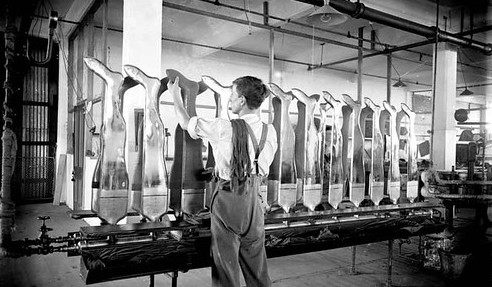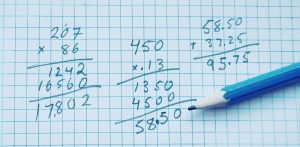The Technique
Do you trust completely the information on the box of the product you buy? I want my students to be able to apply a set of practices that help them make these decisions logically.
In my course, I work with my students to develop processes that use math to evaluate costs of decision making. As a result, we must look at the life cycle of “things.” It requires quantitative reasoning and critical thinking to make decisions based on determining the required data (numbers).
To make informed decisions in the world, we need to understand the values and meaning of concepts, so I use inciting questions like, “What does ‘green energy’ mean? Why are mass-produced consumer products sometimes so inexpensive?” to trigger these considerations with my students.
I start topic discussions with a standardizing process of a lecture, and then we do a review to define the characteristics of the terminology used (embodied energy, power, etc).
This brings all of us to a place where we can move to the inciting questions (to introduce factors that we must consider for cost benefit analysis):
- What are the steps that led “product x” to appear on the shelf?
- What are the costs – invisible to most consumers – that led to its sticker price?
Analysis is needed to make any truly informed decision. Through discussion, we identify factors that are outside of everyday experience / decision making (processing/manufacturing, transport, packaging, etc).

“Manufacturing nylon stockings, Melbourne” by Public Record Office Victoria is licensed under CC BY-NC 2.0
Next, I’ll introduce topic-specific inciting questions:
- How do we calculate the embodied energy in a straw? Is single-use plastic worse than re-usable? What are the energy costs of producing each?
- Should I ride my bike to work or ride a bus? What are the external costs associated with each? Are there secondary considerations (like improved fitness and health)?
This brings us to a place where we can all engage in cases/problems/events. The above process allows my class to reach a point where we can start to match up theory with observation IN experimentation.
How I Use It
To demonstrate inciting questions in action, l’ll share the process for answering the question, “Should I add solar panels to my home?” My students literally break it down. 🙂
Students receive a small solar panel kit, including some basic tools used, to understand how the items work (small solar panel, multimeter, screwdriver, etc.).

First task: Students disassemble the small solar panel and investigate whether it is “as advertised.” What power can it generate? What does that power depend on? Measurements are noted, and short tasks follow to calculate results. Students reach a determination. Ok great!
Then: A new question is presented, e.g. I need to do x (light the steps in my garden), y (run my reading light), and z (charge my phone) each day. Based on the power required for the amount of time used I’ll ask;
- How many small solar panels will I need to have?
- If each panel cost $1.25, how long will it take to make that back in the cost of energy “savings”?
Next: Students must discuss/determine the invisible costs associated with building all the parts of this solar panel. We’ll brainstorm possible involved costs, e.g. mining involved for the metals, manufacturing of plastic, disposing of them at the end of their life, and so on.
Finally: Based on the above experience, students can determine “Is it worth it?”
This small scale example is now easily scaled up to answer the question, “Should I add solar panels to my home?”
Feedback from Learners (from teachers in high school classes visited)
“I think the opportunity was fantastic for learning practical applications of electricity.”
“My students loved seeing all the motors, lights, LEDs, etc.”
“Great hands-on presentation for the class. Thank you!”
Supporting goal 7
Ensure access to affordable, reliable, sustainable, and modern energy for all
This technique can support change or development in this area by contributing to an improved understanding of quantitative evaluation of the products and services consumers are offered. A more comprehensive understanding of what are often “hidden” costs associated with what might seem “inexpensive” can help consumers choose options that are more sustainable. An improved ability to apply quantitative reasoning to everyday choices can also make a consumer more aware of the resources they use.
A short task to challenge you!

A pen/paper math activity to help you practice quantitative reasoning:
- If a small solar panel produces a maximum of 15 mW of power when experiencing bright sunlight, how many panels are needed to directly supply power to a 9 W phone charger?
- If you can store energy from your solar panels in a battery and charging your phone only takes 2 hours, does that change the number of panels you need?
- If electricity costs 10 cents for every kilowatt hour (that is, 1000 Watts of power used for one hour of time), how much does it cost to charge a phone with 9 Watts of power for 2 hours?
- If the small solar panel in part (a) costs $1.25, how many times would you need to charge your phone to save the cost of the panels you need.
One Final Task
Is this something you can use in your classroom? How might you utilize it? If you share your results somewhere on social media, link to this lesson for context.


Feedback/Errata